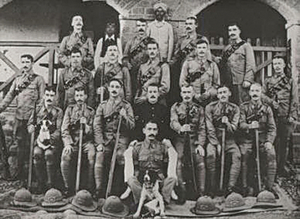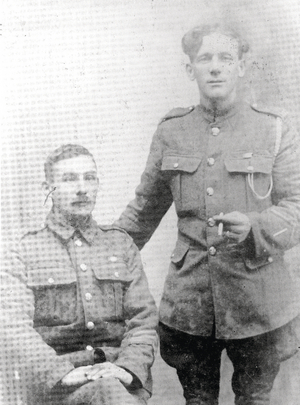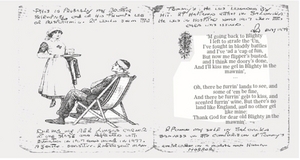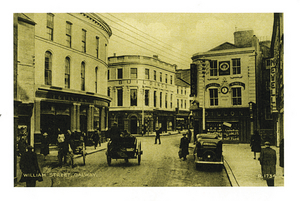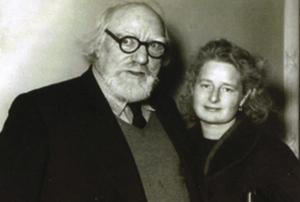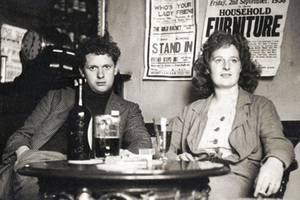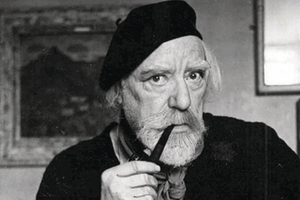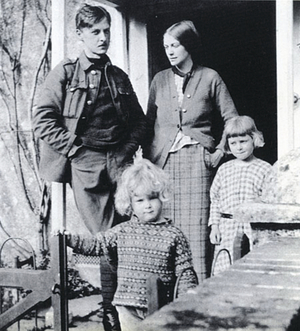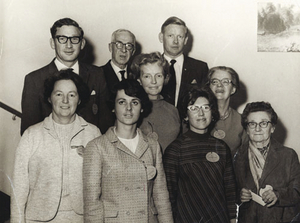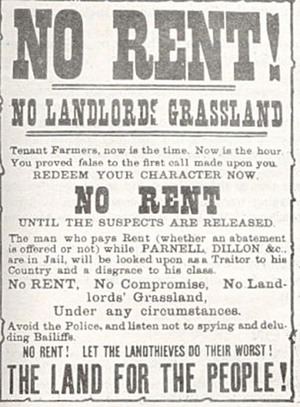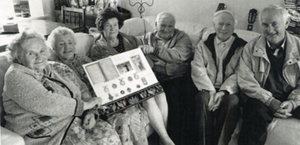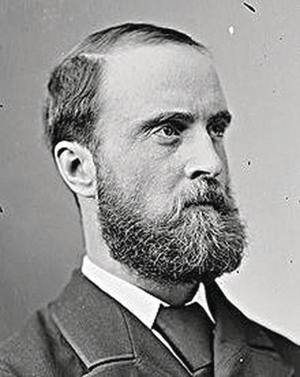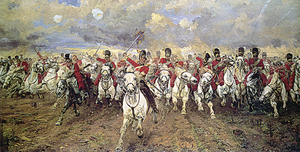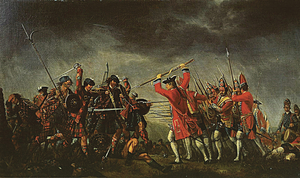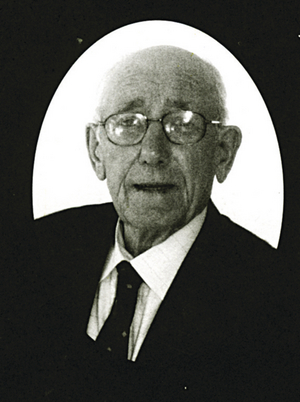‘ When I drop this handkerchief, fire and spare no man’
Thu, Jan 15, 2015
Perhaps fearing that the refusal by Irish soldiers to carry out army duties in Wellington Barracks at Jullundur, northeast India, on June 27 1920; and that the mutiny would spread to an already sympathetic native population, leading to a general protest such as at Amritsar the previous year, the army authorities quickly took decisive action. The commanding officer, Lt Col Leeds, strode into the crowd of excited and rebellious soldiers, demanding to speak to its two leaders John Flannery and Joe Hawes. He warned the men that they could be shot for this; that such behaviour only excited the natives to rebellion. Hawes, smoking a cigarette, replied that he would rather be killed by an Indian bullet than by a British one (His disrespectful attitude to his commanding officer was noted).
Read more ...Two boys from Loughrea
Thu, Jan 08, 2015
At the beginning of the last century, two boys grew up together in Loughrea. Socially they were far apart, but they were great friends. John Oliver was from a particularly poor background. His family lived in a tiny lean-to shack out on the Galway road on the edge of the town. His friend was Tom Wall, who lived in a comfortable house on Patrick Street. John enjoyed visiting their home. His friend played with a band, The Saharas, and there was often music and fun in their house, shared by his brother Ray, and their attractive sister Cissie.
Read more ...Six Furey brothers did not return to Loughrea
Tue, Dec 23, 2014
When it comes to the story of Galway and World War I there is no better man than William Henry. He came upon ‘the secrets in the attic shoe box’ some years ago when writing in a parish magazine he mentioned a relation of his in that war, and surprisingly opened a Pandora’s Box. People met him on the streets and told him that their grandfather, great-uncle, or cousin, or family friend also fought in that war. They had a box of their medals and uniform, letters or diaries somewhere at home.
Read more ...Galway driving instructor named as RSA Leading Light for second year running
Tue, Dec 23, 2014
Philip Rice, Instructor and Managing Director of Advance Drive School of Motoring in Salthill, Galway has won the prestigious Leading Lights in Road Safety Award for Approved Driving Instructor of the Year 2014 for the Truck Category.
Mr Rice was presented with the award by Liz O’Donnell Chairperson of the Road Safety Authority. He scooped the nationwide award for a second year running after winning the award in 2013 for his recognition and contribution to road safety.
Read more ...RTÉ Today Show searching for Galway’s heroes
Tue, Dec 23, 2014
Everybody knows them, the trojans of the local community who do hours of voluntary work and never seek any recognition.This could be anyone from the life saving doctor, to the jersey washer at the local GAA club. Is there a member of your community who goes that extra mile?
Read more ...Thirty nine stories from south Galway
Thu, Dec 18, 2014
Before the cattle marts took over the selling of livestock and farm produce, that important aspect of farming took place on fair days. The main street or the square of the town would become a heaving mass of people, animals, carts and stalls. The marts offered a point for disease control, and traceability that eventually became the norm. But before that, to pass through a town on a fair day was to witness rural Ireland in full flow. Fairs were busy, messy, and lively occasions, and very much looked forward to by both the shop keeping and farming communities. There was a May Fair, an August Fair and another around December 8. Not only were animals bought and sold, but friends met, couples exchanged glances; clothes and boots were bought, and glasses of porter sealed a deal.
Read more ...Ghosts of Galway’s past
Thu, Dec 11, 2014
One of the mysteries of Galway is that curious phrase under the west facing clock on the Galway Camera Shop on William Street, which says: Dublin Time. The fact that now the clock shows ordinary winter time only adds to the mystery. But not so long ago Galwegians, delighting in the longer days of sunlight than in the east of the country, and displaying an oddity that makes living in Galway a pleasure, set their clocks a full eleven and an half minutes behind Dublin. However, trains had to run to a standardised timetable otherwise transport chaos would ensue. The timetable was set at Dublin time (linked, like the rest of the civilised world, to Greenwich Mean Time), so as Galwegians hurried to the station they could glance at the clock, and probably have to put on speed (perhaps Galway Time explains why most meetings here are usually 11 minutes late?).
Read more ...A Child’s Christmas in New York
Thu, Dec 04, 2014
Years and years ago, when I was a boy, when there were wolves in Wales, and birds the colour of red-flannel petticoats whisked past the harp-shaped hills, when we sang and wallowed all night and day in caves that smelt like Sunday afternoons in damp front farmhouse parlours, and we chased, with the jawbones of deacons, the English and the bears, before the motor car, before the wheel, before the duchess-faced horse, when we rode the daft and happy hills bareback, it snowed and it snowed.
Read more ...Caitlin and Dylan : At War and Peace
Thu, Nov 27, 2014
In the closing two years of the war most Londoners thought that the worst of the bombing raids were over. Instead, for a brief and intense period, a more sinister chapter of death from the skies opened. Flying bombs, launched from occupied Europe, flew into London. They were pilotless and practically without sound, except for a wail as they descended. They terrorised a war-weary people.* Many, who had braved the previous raids, felt that this was a horror too far. They sought refuge in quieter rural areas.
Read more ...Caitlin and life with the Johns
Thu, Nov 20, 2014
The four Macnamara children, John, Nicolette, Brigit and Caitlin, when abandoned by their father, must have sought some stability from their mother Yvonne. But she was distracted by her passion for Nora Summers, and was just not available. Instead they were scooped up by the artist Augustus John, and his mistress Dorelia McNeil, and, saying good-bye to Doolin, were brought to live in his rambling red-brick home in Dorset. At the end of a sweep of gravel, lost in rhododendrons and trees, Alderney Manor was surrounded by miles of moorland. It was an ideal and happy playground for young children.
Read more ...Stormy summers on the Clare coast
Thu, Nov 13, 2014
One of the most interesting hotels in Ireland is the Falls Hotel, Ennistymon, Co Clare. Apart from its spectacular setting overlooking the River Inagh as it cascades over wide ledges almost immediately outside its door, this distinctive building conceals within its walls an 18th century mansion, and a late medieval castle. It was the home of the one-time wealthy Macnamaras, landlords of vast Clare territories. The last of the clan to hold any real status was Henry Valentine Macnamara (known as Henry Vee), the High Sheriff of Co Clare, and a character to be reckoned with. One December morning in 1919, Henry Vee and friends (who included a British army officer and a Lady Beatrice O’Brien), set out in a convoy of cars for a woodcock shoot in the Burren.
Read more ...O’Beirn’s Pharmacy, Henry Street
Thu, Nov 06, 2014
Our photograph today is of the Galway Committee of the Pharmaceutical Union who organised a national conference of their peers here in the early 1960’s. They are, back row; Paul Hayes, Lydon’s Pharmacy; Gussie Hayes, Portumna; Tommy Farmer a medical rep and also a qualified pharmacist who lived and worked out of Devon Park. In front are Eibhlín Ó Beirn, Ó Beirn’s Pharmacy, Henry Street; Mary Breen; Mary Barry who worked in Merlin Park; Judy Walsh, Spiddal; Síle Ó Beirn, Henry Street; Laura Cunniffe, William Street and Salthill.
Read more ...James Hack Tuke and his plan to assist emigration from west of Ireland
Thu, Oct 30, 2014
The agricultural crisis of 1879, and growing civic unrest, prompted the Society of Friends in England to send James Hack Tuke to the west to inquire into conditions and to distribute relief. Tuke, the son of a well-to-do tea and coffee merchant family in York, England, published his observations in Irish Distress and its Remedies: A visit to Donegal and Connaught in the spring of 1880. In clear-cut language he highlighted the widespread distress and destitution at a time when the British government questioned the extent of the crisis.
The Quakers were well regarded in the west of Ireland. The work of James and Mary Ellis, in providing practical help and training in agricultural and fishing skills at Letterfrack was well known and appreciated. James Hack Tuke is not as well known. Perhaps because his remedy in assisting an impoverished people was a radical one. His observations concluded that there was no major improvement in the position of the people since the Great Famine, 40 years before. Tuke saw that local resources, and in particular agriculture, could not sustain such a large population. He believed that assisted emigration was the long-term solution. His plan would only work if whole families (rather than individuals) left, as this would free up their lands to allow another family increase the size of their holdings, and make a more viable farm. It was a controversial idea, and initially it won wide-spread approval.
Read more ...The gathering storm
Thu, Oct 23, 2014
The threat of another famine in 1879, within living memory of the horror and catastrophe of the Great Famine some 29 years earlier, brought renewed terror to the vulnerable tenant farmers in the west of Ireland. This time it was not just the humble potato, but severe weather conditions which devastated crops and feed stuffs over a three year period. Farm incomes dropped dramatically, landlords fussed that rents would not be paid. Whereas some landlords were patient, others warned that evictions would follow if rents were not paid on time.
Read more ...The Dohertys of Carrigan were not ‘land-grabbers’
Thu, Oct 16, 2014
Galway Diary received the following statement from Adrian Martyn (great-great-great grandnephew of Peter Doherty, senior), who was shot dead at Carrigan, near Craughwell village on the night of November 2 1881. I am pleased to carry Adrian’s clarification:
Read more ...The Land War: A desperate duel between Parnell and Forster
Fri, Oct 10, 2014
The continued unrest, murders, and large-scale protests as the Land War careered dangerously through the Irish countryside, led at last to some reform. William Gladstone’s Second Land Act of 1881 proposed broad concessions to the tenant farmer. But Parnell, the very effective leader of the Irish Parliamentary Party, was not satisfied. He said that tenants were still vulnerable to rent arrears and poverty resulting from poor harvests. He urged that the Act either accommodate these concerns, or be rejected.
Read more ...‘The people are mightier than a lord’
Thu, Sep 18, 2014
Week III
Scotland did not have the explosive combination of Michael Davitt’s organisational and inspirational skills, and Parnell’s power of command, and genius for leadership that turned the Land League into a highly effective weapon of agitation. For decades the Scottish crofter had no effective power, except occasional physical resistance, to stop evictions from their homes to make way for sheep, and deer.
Scotland: A history not unlike our own
Thu, Sep 04, 2014
On the morning of April 27 1746 the Duke of Cumberland calmly moved his army of 8,000 men into position before a colourful Scottish array of 7,000 highlanders, including about 150 Irishmen then serving in the Irish Brigade in France. The place was Culloden, south east of Inverness.
Read more ...‘The people who made us what we are today’
Thu, Aug 28, 2014
Imust admit that I have driven through Kiloughter village probably only half a dozen times in my life. It is located just off the Headford Road, at the start of the Curraghline, about four old miles from Eyre Square. Bordering the Ballydooley village, there cannot be more than a dozen houses there, but it is not an insignificant place.
Read more ...‘The people who made us what we are today’
Thu, Aug 28, 2014
I must admit that I have driven through Kiloughter village probably only half a dozen times in my life. It is located just off the Headford Road, at the start of the Curraghline, about four old miles from Eyre Square. Bordering the Ballydooley village, there cannot be more than a dozen houses there, but it is not an insignificant place. Thanks to a charming and beautifully written book by John Connell, Kiloughter has been brought forward as a mirror of old rural Ireland, which in the space of a few decades, has slipped away from us.*
Born August 8 1927, John does not begrudge the fact that today’s farmers have to have up-to-the-minute labour saving machinery; or that every household has machines for the day-to-day chores, and that village silences have been changed with cars and tractors passing through every hour of the day and night. He recalls, however, the village of his youth out of respect and admiration for the people whose ‘strength of character through all kinds of hardship, who walked the byways and cosáns, or pathways that we now walk in their footsteps, the people who made us what we are today.’
Read more ...